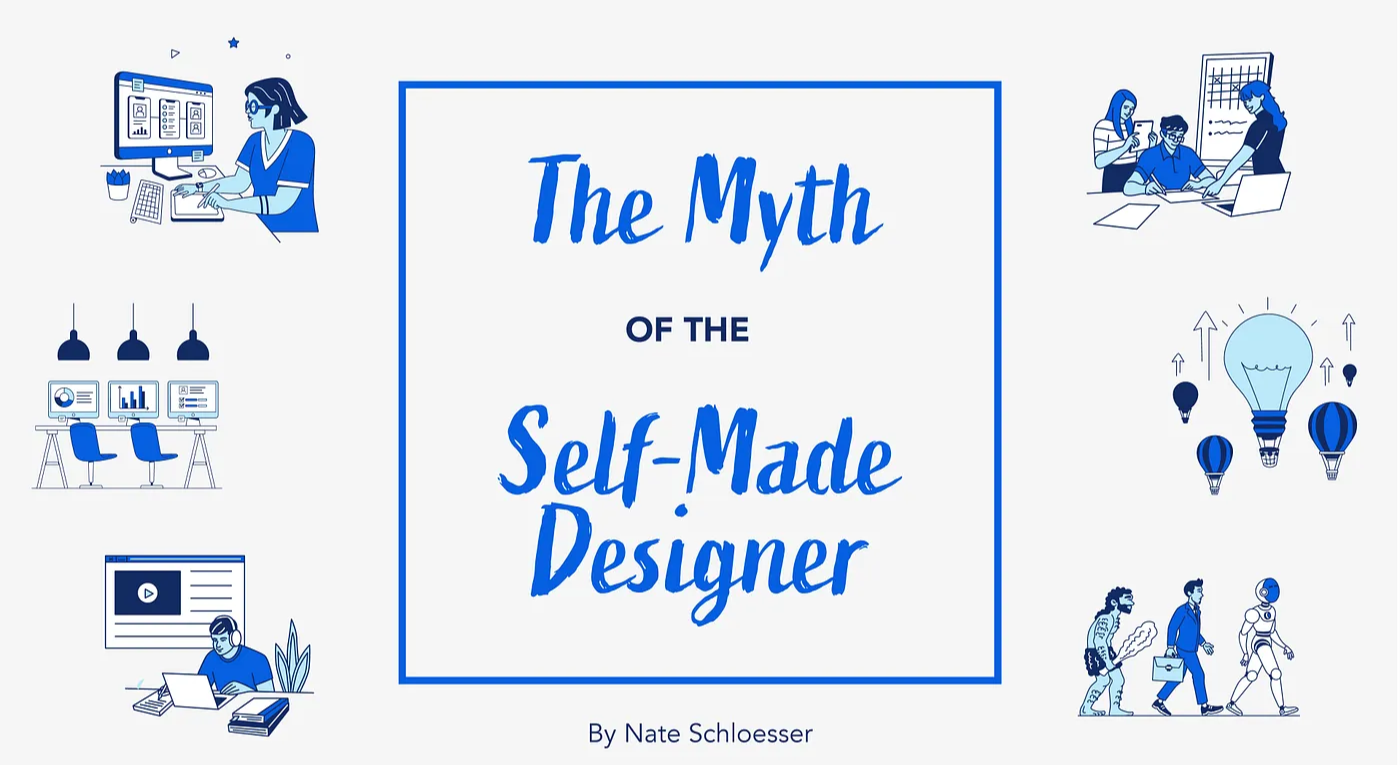We’ve all heard it — designers who are “self-taught” or “self-made.” The typical story of the designer who achieved success without any outside help, support, or resources. But is this really possible? Can someone really become a designer without any external help? The short answer is no. There’s no such thing as a self-made or self-taught designer and the very pursuit is a dangerous aspiration that should be avoided and discouraged.
The design industry is full of professionals who refer to themselves as self-made or self-taught. This is how I used to refer to myself too. In some ways, the terms make a lot of sense. When I was starting out in the design industry, there weren’t a ton of great schools for design, as the need for digital designers and UX outpaced the standardization of the position itself. Designers were learning, adapting, and figuring out their roles and skills as the industry was growing around them. It was an exciting and chaotic time. So the industry was immature and undefined in many ways. Therefore, UX schools that did exist were often lacking in credibility, void of substance, and very costly.
Most designers (and many designers now) learned in less traditional ways. I am one of them. I had an interest in graphic design in high school and took some classes on Photoshop. I got my first job as a graphic designer a month after I graduated and worked in design to pay for university as I sought to become a pastor. Graphic design was a way to pay the bills. As I stayed with it, I began to take my learning and growth seriously. I read books, learned from mentors, took courses, attended conferences, practiced my craft, and embraced opportunities to be challenged, eventually making the switch to UX. I didn’t have a traditional path of University to Internship to Full-Time at an established organization. There wasn’t a name for this winding, unconventional path. Referring to ourselves as “self-taught” sorta stuck and even became aspirational. It was like a badge of honor. But was this path really “self-taught”?
The terms self-taught and self-made are contradictory terms. A person cannot teach themselves that which they do not know. Likewise, a person cannot make themselves into something they are not without forces outside of themself. There is no such thing as a self-taught or self-made designer.
Making a Designer
Designers are not born, they are made. They do not come into being by happenstance or without considerable effort.
Here are the 5 key aspects to becoming a designer:
- Education
- Experiences
- Opportunities
- People
- Time
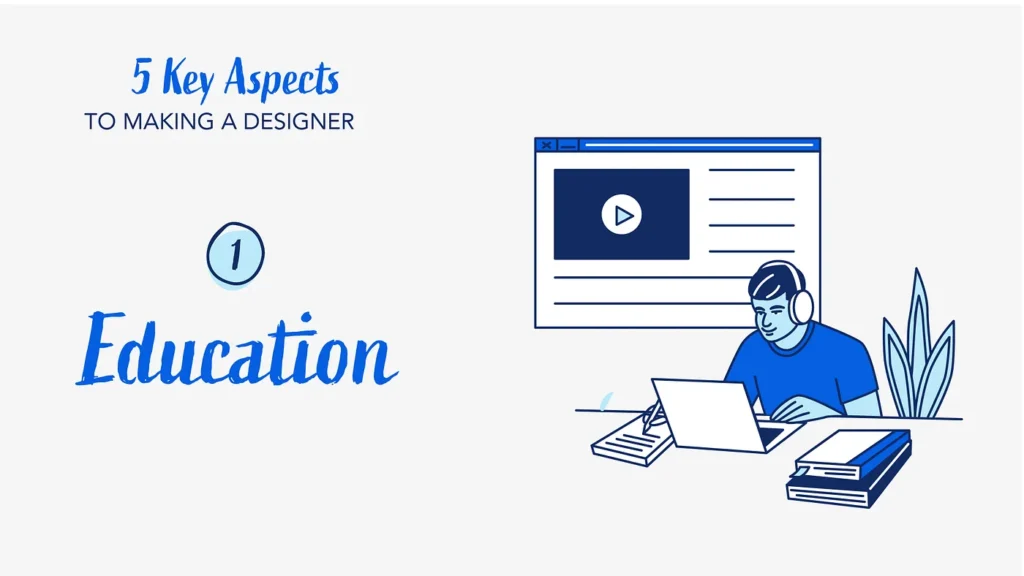
Education
Education is an essential component when it comes to becoming a successful designer. It doesn’t matter if you choose to pursue higher education, online courses, or self-paced reading — learning design theories, principles, and techniques will give you the foundation necessary for success in this field. Aspiring designers must have a strong foundation in design fundamentals which can be obtained through education.
Since a person can’t teach themselves that which they do not know, a design has to lean on experts in the field, traditional education, or online programs.
For me, my education came primarily through books from experts in the field, along with some conferences and online courses.
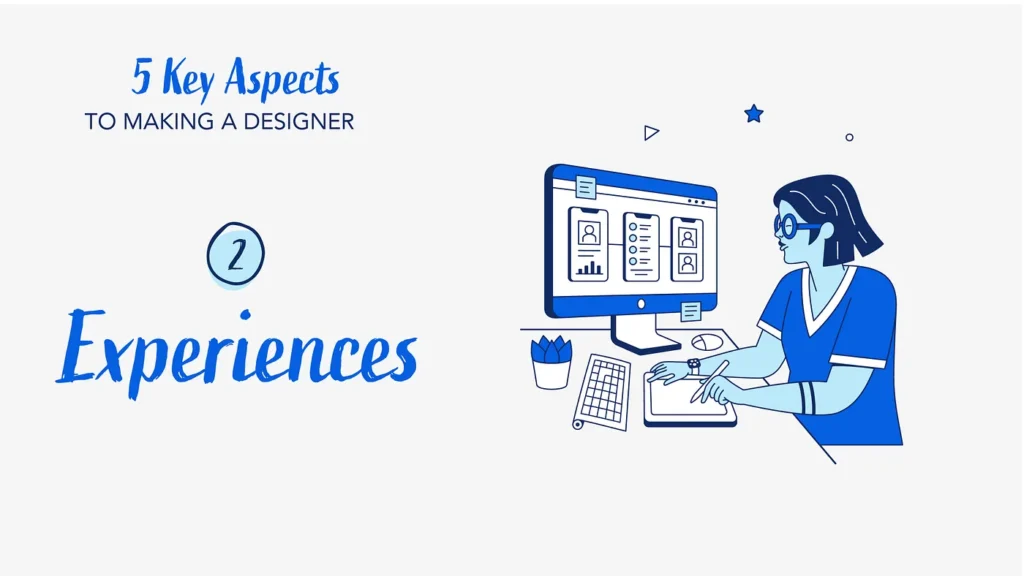
Experiences
Experience means the repeatable practice of what you learn through education—the ability to practice within different contexts, around different people, and for different scenarios. This allows a designer to hone their craft. You cannot learn everything from books, school, or courses alone; having hands-on experience with projects will help you understand how to design fundamentals work in the real world.
Designers rarely know how to test their theoretical design principles on their own. Designers need to have experiences outside of themselves in order to grow.
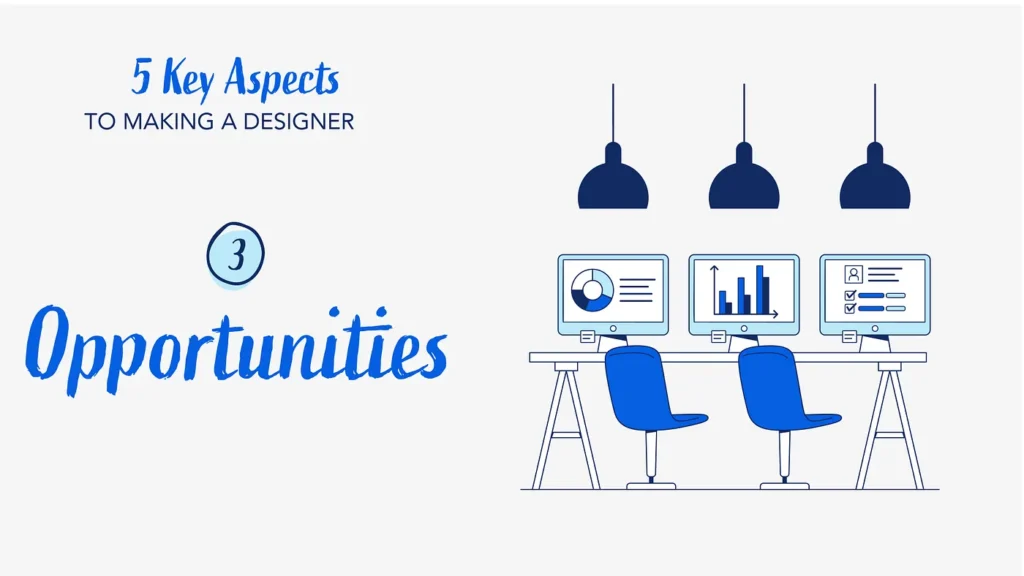
Opportunities
It takes more than just talent to make it as a designer; it takes opportunity too! By networking with other creatives in your field, seeking out mentorships or internships, or searching for freelance jobs online, you can create more opportunities for yourself to showcase your work and grow as a designer. Taking advantage of these opportunities can open many doors for you that would otherwise remain closed if you remained stuck in an isolated environment with no connections or resources available to help you advance your career as a designer.
There are innumerable amount of doors leading to opportunities. The trick is to make the most of whatever opportunities come before you. Opportunities to showcase work, teach other designers, get feedback, network with other designers, enter design competitions, work in wicked problem spaces, etc.
For me, some of the most obscure opportunities became pivotal points in my career. I had an opportunity to work for a Gold Stash for Cash company. That led to being able to start a design firm and becoming one of the leaders. Which then led me into the field of User Experience. You can’t always control the opportunities you get, but you can control what you do with them.
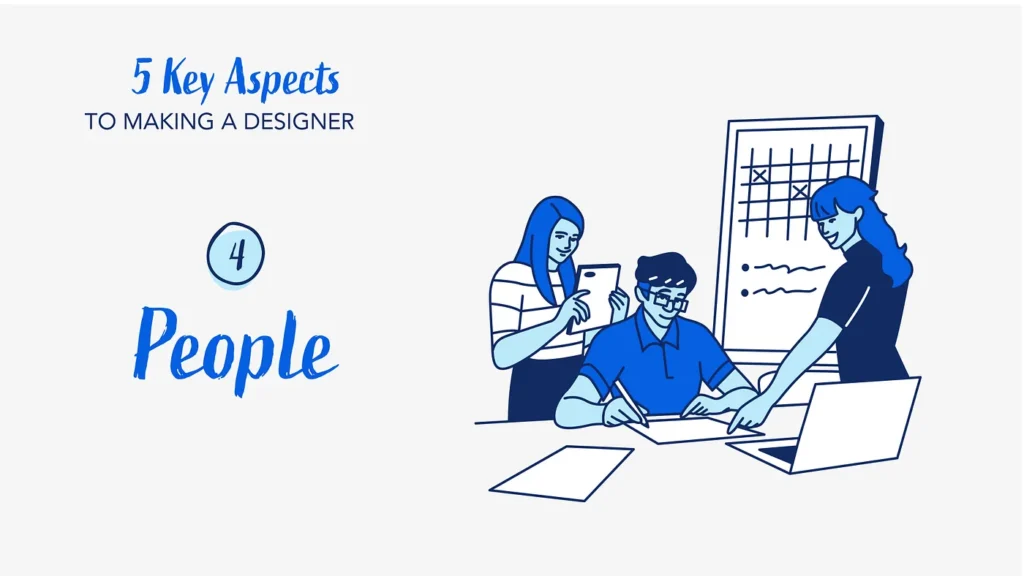
People
Surrounding yourself with experienced professionals can help you stay motivated and inspired while gaining valuable insights into what works (and what doesn’t). It’s also important for aspiring designers to find people who can provide honest feedback on their work so they can improve their skillset over time.
No man (or woman) is an island — and this certainly applies when it comes to becoming a successful designer! Having mentors, guides, peers, adversaries, and other people who can help you grow while also connecting you with potential employers is invaluable when starting out in the design industry as well as maturing in the design industry.
I cannot begin to describe the importance of other people in my career. I have learned from mentors over the years, sharpened with peers, and had the opportunity to help others grow. As I think through the names, I a humbled and delighted by the number of people that have had an impact on my career:
Ryan Murphy, Chris Thompson, Jeff Lloyd, Jason Hamrock, Davin Granroth, Barbara Hernandez, AJ Morris, Nicole Morris, Roger Rohatgi, Jon Daiello, John Parkinson, Aaron Stites, Jason Walker, Gerald Miller, Caitlin Potts, Matthew Brown, Diane Bowen, Cassie Mackin, Erica Gaines, Jerad Raines, Ben Berkompas, Cary Griffith, Tim Kirby, Amber Swartz, Margaret Hoang, Ray Hyman, Patrick Smith, Ryan Sherrett, Ron DeHass, Katie Oeschger, Joe Chrysler, Alan Ray, Andrew Keller, and many, many more.
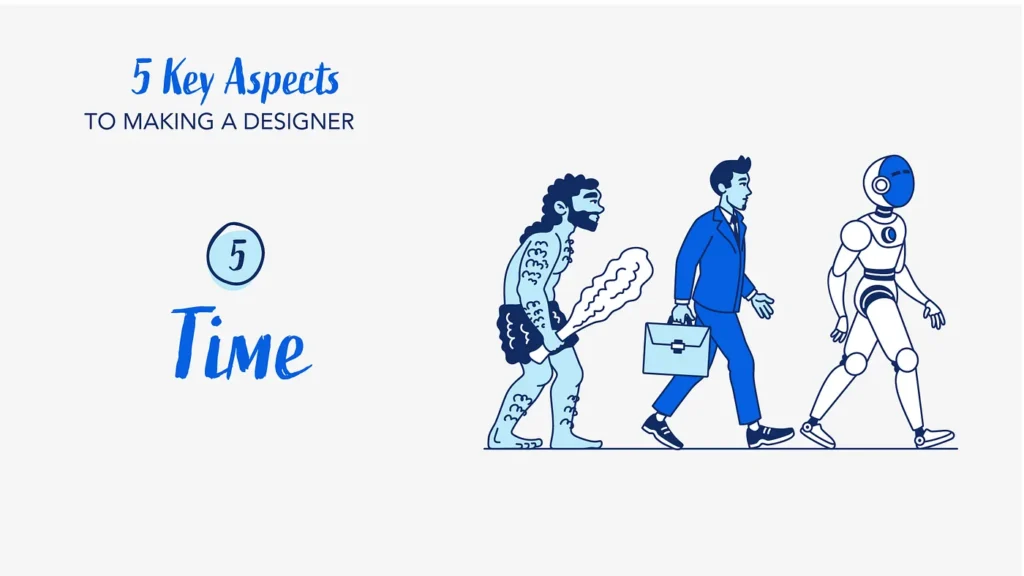
Time
Being patient while honing your craft as a designer is vital — Rome wasn’t built in a day and neither will your career. As much as we all wish there was a shortcut that could take us from novice level to expert level overnight, this simply isn’t possible. Becoming an expert requires dedication and lots of practice over time. If something doesn’t seem right don’t give up — instead use this as motivation to keep going until everything clicks into place!
In my experience time is the hardest aspect to accept. It’s the one piece that requires a tremendous amount of patience. I have been in the design industry for nearly 17 years now. And I still have so much to learn and so much to grow in. 10 years ago, I had even more to learn. This stuff takes time. It cannot be rushed. That is a lesson that was hard to grasp at first. I remember the feeling of being told I was a level 2 designer when in my mind I was a level 4. I hadn’t put in the time yet and hadn’t reached that level at that point. It’s a humbling realization, but an important one.
Debunking the Myth
While it may sound clichéd — nobody is truly “self-made” — this couldn’t be truer for those who strive for success as a designer. Designers require education, experiences, opportunities, other people & time in order for them to mature into full-fledged professionals capable of producing quality work consistently over time; all of which come from sources outside of “self”— debunking the myth of the self-made designer once and for all.
The Dangerous Trade
The pursuit and aspiration of being “self-made” come with some costly consequences—dangerous to any designer who continues to walk this path. To be made into a designer takes education, experiences, opportunities, other people & time. However, the “self-made” pursuit trades each of those aspects for something else:
- Ignorance over Education
- Ego over Experience
- Arrogance over Opportunities
- Pride over People
- Isolation over Time

Ignorance over Education
Ignorance is perhaps the most insidious trait of all when it comes to design. Designers who have not had standardized education through books, online programs, or design school may think they know more than they do — and this can lead to costly mistakes that could have been avoided with proper instruction. In addition, without an understanding of the fundamentals of design, it’s easy to get caught up in trends or fads and miss out on what truly works for your project or product.
“You don’t know what you don’t know.” — Socrates
There are experts in the field that can be found in schools, online programs, and books. They are smarter and more experienced than you or I. There is a reason they are considered experts. Their ways are tried and true. The self-man designer thinks they are above education.
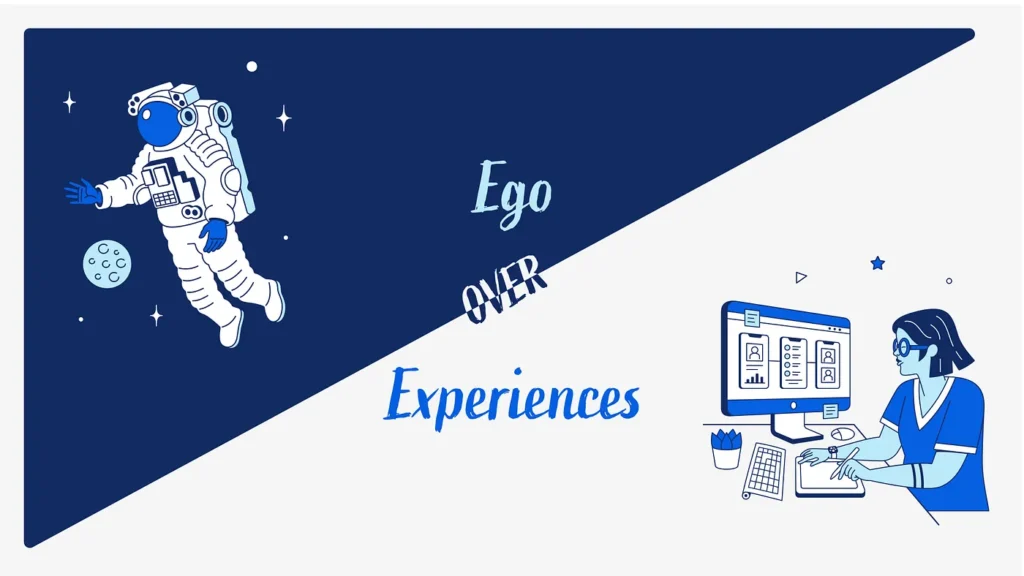
Ego over Experiences
Ego is also a problem for many self-made designers. When you think that you know everything already, you may start thinking that your work is better than everyone else’s or that your opinions are more valid than others’. This kind of attitude can be alienating for colleagues, clients and peers and can lead to missed opportunities for collaboration and growth. Essentially a designer misses out on learning from experiences because they believe that they are solely responsible for their success.
This can lead to an inflated ego and an inability to accept constructive criticism. This can be especially damaging in a work environment where feedback is essential for growth and development as a designer. It is important for designers to remain open to critiques and feedback from peers in order to continue learning and progressing in their skillset through their experiences.

Arrogance over Opportunities
Arrogance is also a frequent issue among self-made designers — especially those who don’t understand their own limitations or capabilities as creators. Arrogance can lead to overpromising and underdelivering on projects, resulting in missed deadlines and dissatisfied clients or employers.
Instead of embracing opportunities and following their success, designers can blow them altogether. Additionally, arrogance can prevent designers from learning from their mistakes — leading them down a road of stagnation instead of growth and development as professionals.
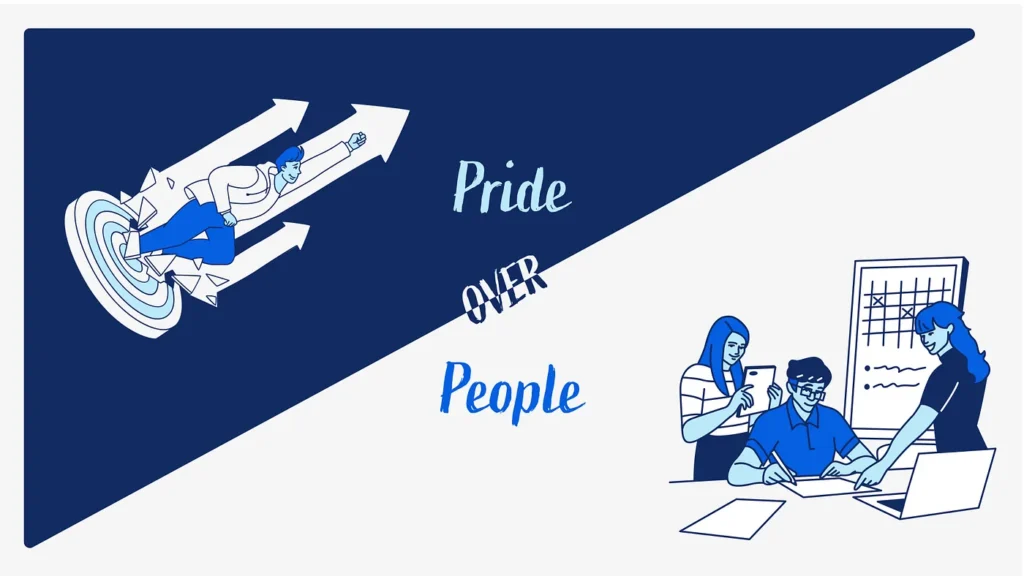
Pride over People
Pride can also become an issue when designers aren’t properly trained or mentored by experienced professionals in their field. Without another perspective guiding them through the process of creating effective designs, it’s easy for self-made designers to succumb to prideful beliefs about their own abilities — even if those beliefs aren’t accurate reflections of reality. Rather than leaning on other experienced professionals, designers will continue to build on a foundation of quicksand. This kind of pride can prevent designers from seeking out help when they need it most — which will inevitably lead them down paths where mistakes are made over and over again without any progress being made toward improvement or success.
“Pride goes before destruction, and haughtiness before a fall.” — Proverbs 16:18
A false sense of pride is damaging because it implies that they have done it all on their own without any input from mentors, teachers, coaches, or colleagues. It also gives them a false sense of accomplishment because they are not recognizing all the people who helped them along the way.

Isolation over Time
When a designer continues down the “self-made” path, inevitably they will become isolated. Instead of growing into a mature design over time through a solid foundation, opportunities, experience, and mentors, self-made designs continue to sink into themselves—after all, themselves is all they really need. If you believe that you have achieved your success on your own without any help, then you may start to feel like you do not need advice or support from other designers who could help you become even better at what you do. This type of isolation will stunt your professional growth and prevent you from connecting with other professionals in your field who could offer valuable insights into how best to approach certain design challenges or projects.
The worse part of this isolation is that it steals valuable time from your career. For example, a self-made designer can be in the field for 10 years and hardly grow because of their isolation, leading them to have the skills of a junior designer.
We Need Each Other
Self-made designers are a myth at best. At worst it is a lonely path toward ego, pride, and arrogance. The key difference between a successful designer and a self-made designer is the inclusion and recognition of other people as vital parts of your growth and development. Every designer should be learning from others and every designer should be helping others to learn.
The danger of this myth lies in its implications — it implies that success comes from within and that all it takes to be successful is just hard work and determination on the part of an individual without any help from anyone else. It implies that you can become successful without any external support or guidance, which isn’t true at all. In reality, designers rely heavily on others for feedback, advice, and expertise— especially when starting out in their careers. No one can truly make it completely on their own — mentors, colleagues, friends, family — all of these people play an important role in helping designers reach their goals and achieve success.
Let’s abandon the quest for the mythical, self-made designer—in our own careers and in the careers of others.


